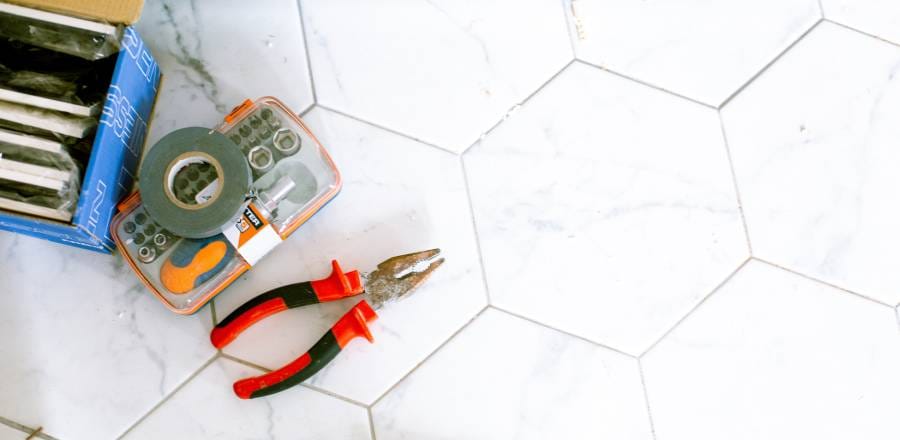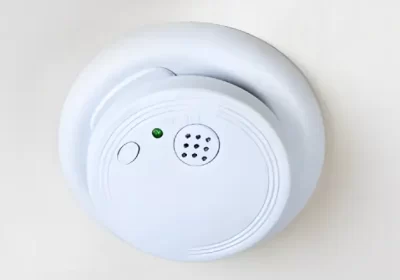Water damage is one of the most common problems homeowners face. When it comes to tile flooring, water can seep in through the grout and cause damage to the subfloor. This can be a tricky problem to deal with, as it’s often difficult to know where the water is coming from and how much damage has already been done. However, with the right tools and techniques, it’s possible to dry out the water and prevent further damage.
Table of Contents
How to Dry Out Water Under Tiles: A Comprehensive Guide
Preliminary Steps
Before you start drying out the water, it’s important to take some preliminary steps to ensure your safety and the safety of your property. Here are some things to keep in mind:
- Turn off the power: If there are any electrical outlets or appliances near the water damage, turn off the power to prevent electrocution.
- Wear protective gear: Wear gloves, goggles, and a face mask to protect yourself from mold and bacteria.
- Remove standing water: Use a wet vacuum or towels to remove any standing water from the affected area.
- Identify the source of the water: Determine the source of the water and fix any leaks or other issues before proceeding with the drying process.
Drying Techniques
Once you’ve taken the necessary precautions, it’s time to start drying out the water. Here are some effective techniques:
- Use fans: Set up fans in the affected area to increase air circulation and promote evaporation. You can also use a dehumidifier to remove excess moisture from the air.
- Remove tiles: If the water damage is severe, you may need to remove the tiles to access the subfloor. Use a chisel or hammer to carefully remove the damaged tiles.
- Use a hairdryer: A hairdryer can be an effective tool for drying out small areas of water damage. Use the lowest heat setting and hold the hairdryer a few inches away from the affected area.
- Apply heat: If the weather is dry and warm, open windows and doors to allow for natural ventilation. You can also use a space heater or heat lamp to speed up the drying process.
What happens if water gets under ceramic tile
Water damage is a common problem that can affect any type of flooring, including ceramic tiles. If water gets under ceramic tiles, it can cause a range of problems that can be both costly and time-consuming to repair. Here are some of the things that can happen if water gets under ceramic tile:
- Mold and Mildew Growth
Mold and mildew thrive in damp, humid environments, making ceramic tile a prime breeding ground for these types of fungi. When water gets under ceramic tile, it creates the perfect environment for mold and mildew to grow. If left unchecked, mold and mildew can spread quickly, causing a range of health problems, including allergies, respiratory issues, and infections.
- Structural Damage
Water can seep through cracks and gaps in the grout and subflooring, causing structural damage to your home. Over time, this can lead to warped or buckled tiles, as well as damage to the subflooring and foundation. This can be a costly problem to fix and may require professional intervention.
- Stains and Discoloration
If water gets under ceramic tile, it can cause stains and discoloration. This is especially true if the water contains any type of dye or pigment, such as from coffee, tea, or juice. These stains can be difficult, if not impossible, to remove, and may require replacing the affected tiles.
- Foul Odors
Water that gets under ceramic tile can create a musty or foul odor. This can be especially problematic if the affected area is in a frequently used room or living space. Even after the water has been removed, the odor may linger, requiring extensive cleaning and deodorizing.
- Health Risks
In addition to mold and mildew growth, water damage can also pose a range of health risks. Water can contain bacteria and other pathogens that can cause illness, especially if the water is contaminated with sewage or other toxins. Inhaling mold spores can also lead to respiratory issues, especially in individuals with pre-existing health conditions.
Water damage is a serious problem that can affect any type of flooring, including ceramic tile. If you suspect that water has gotten under your ceramic tile, it’s important to take action immediately to prevent further damage. This may involve removing the affected tiles, drying out the area, and repairing any structural damage. In some cases, it may be necessary to call in a professional to help with the restoration process. By taking quick and decisive action, you can minimize the damage and ensure the safety and health of your home and family.

Water coming up through floor tiles after rain
Water coming up through floor tiles after rain can be a frustrating and potentially dangerous problem for homeowners. If left unchecked, this can lead to a range of issues, including mold growth, structural damage, and health hazards. Here are some of the common reasons why water may be coming up through your floor tiles after rain and what you can do to address the issue:
- Poor Drainage
One of the most common reasons why water may be coming up through your floor tiles after rain is poor drainage. If your home’s drainage system is clogged or not functioning properly, rainwater can accumulate around the foundation of your home, causing the water table to rise. This, in turn, can lead to water seeping up through your floor tiles. To address this issue, make sure your gutters and downspouts are clean and clear of debris, and consider installing a French drain or other drainage system around your home’s foundation.
- Leaky Roof
If your roof is old or damaged, it may be allowing water to seep into your home, causing water to come up through your floor tiles after rain. To check for a leaky roof, inspect your attic for signs of water damage or mold growth. If you see any signs of damage, contact a roofing professional to repair or replace your roof as soon as possible.
- Cracks in Foundation
Another common cause of water coming up through floor tiles after rain is cracks in your home’s foundation. Over time, the soil around your home can shift, causing your foundation to crack and allowing water to seep in. To address this issue, you may need to have your foundation inspected and repaired by a professional.
- Poor Tile Installation
If your floor tiles were not installed properly, water may be seeping in through the gaps between the tiles, causing water to come up through the floor after rain. To address this issue, you may need to have your tiles re-installed or sealed to prevent water from seeping in.
Water coming up through floor tiles after rain can be a serious problem that requires prompt attention. If you suspect that your home is experiencing this issue, it’s important to identify the underlying cause and take appropriate action to address the problem. Whether it’s poor drainage, a leaky roof, foundation issues, or poor tile installation, there are steps you can take to prevent further damage and ensure the safety and health of your home and family.
FAQs
- How long does it take for water to dry under tile?
The amount of time it takes for water to dry under tile can vary depending on several factors, such as the type of tile, the thickness of the flooring, and the amount of water present. In general, it can take anywhere from a few days to several weeks for water to completely dry out under tile. - What happens if water gets underneath tiles?
If water gets underneath tiles, it can cause a range of problems, including mold and mildew growth, structural damage, stains and discoloration, foul odors, and health risks. Water can seep through cracks and gaps in the grout and subflooring, leading to warped or buckled tiles, as well as damage to the subflooring and foundation. - How do you dry out water under a tile floor?
To dry out water under a tile floor, it’s important to first identify the source of the water and fix any leaks or other issues. Once this has been done, you can use fans, dehumidifiers, and other drying tools to increase air circulation and promote evaporation. In some cases, it may be necessary to remove the affected tiles to access the subfloor and dry out the area thoroughly. - What to do if water gets under ceramic tile?
If water gets under ceramic tile, it’s important to take action quickly to prevent further damage. This may involve removing the affected tiles, drying out the area, and repairing any structural damage. In some cases, it may be necessary to call in a professional to help with the restoration process. - Can mold grow under tile?
Yes, mold can grow under tile if there is moisture present. Mold and mildew thrive in damp, humid environments, making tile a prime breeding ground for these types of fungi. If left unchecked, mold and mildew can spread quickly, causing a range of health problems, including allergies, respiratory issues, and infections. - How do you know if there is moisture under tile?
There are several ways to determine if there is moisture under tile, including:
– Checking for discoloration or stains on the tile or grout
– Feeling for dampness or sponginess when walking on the tile
– Using a moisture meter to detect moisture levels in the subflooring
– Checking for mold or mildew growth on or around the tile
– Smelling for musty or foul odors in the affected area
Conclusion
Water damage under tiles can be a serious problem that requires prompt attention. If you suspect that there is moisture under your tile, it’s important to take action quickly to prevent further damage. This may involve identifying the source of the water, removing the affected tiles, and using drying tools to promote evaporation. Additionally, taking preventative measures, such as maintaining your home’s drainage system and sealing your tile grout, can go a long way in preventing moisture damage from occurring in the first place.
It’s important to keep in mind that water damage can be both costly and potentially dangerous, leading to mold growth, structural damage, and health hazards. By taking steps to address the issue as soon as possible, you can minimize the damage and ensure the safety and health of your home and family. Whether you choose to tackle the problem yourself or enlist the help of a professional, the key is to act quickly and decisively.





